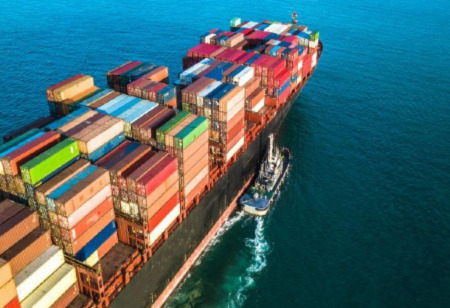
Has Bangladesh Found the Key to Increase its Export Diversification?


Bangladesh has made some progress, but in comparison to its rivals, it has not been able to diversify its export base, increasing the concentration of the textile industry.
The paper ‘Bangladesh Global Value Chain Report: Transforming Participation in Trade and Global Value Chains’, jointly published by the Asian Development Bank and the Islamic Development Bank Institute." reveals that Bangladesh's trade-based value chain involvement percentages range between 22.6 percent and 26.01 percent, which is significantly lower than the global average of 40.6 percent to 46 percent.
When it came to participation rates based on commerce, Bangladesh barely outperformed Pakistan; when it came to participation rates based on production, Bangladesh came in last.
Although there has been a tendency toward diversification in recent years, concentration was still higher in 2020 than in the early 2000s, said the Bangladesh Global Value Chain Report.
Why Participation in GVP Matters
Participation in global value chains is crucial for the sustainable development of the economy, according to research written by the Asian Development Bank (ADB) and the Islamic Development Bank Institute.
It appears that Bangladesh’s diversification of export items is not proceeding as anticipated and that high tariff rates on the raw materials used to produce export products result in high production costs. As a result, Bangladesh is having trouble remaining competitive in the global market.
Now, due to Bangladesh's lack of development in worldwide integrated production management, is prohibiting it from delivering much value to the global economy as production and trade move more and more in unison.
But Optimism Rises in the Export Production of its Textile Sector
Bangladesh has emerged as the most export-concentrated nation when compared to competitors, showing a relatively high level of specialization toward particular items in the textile industry.
Its Ready Made Garments (RMG) industry accounts for the majority of its exports. In the RMG industry, there is a ton of room for diversification. Nine countries namely the US, Germany, the UK, Spain, France, Italy, the Netherlands, Canada, and Belgium—receive about three-fourths of RMG exports. Bangladesh can target developing markets in Asia like South Korea, China, and India. Furthermore, markets in Central Asia, the Middle East, and Africa can be targeted.
But there is hope, as more equal distribution was seen, with sectors like agricultural, wholesale, post and telecommunications, and finance making higher contributions to export output, even if the textiles industry still made up a significant portion of value-added exports.
Moving on to other potential industries, pharmaceutical exports can increase in volume by utilizing the benefits of the TRIPS Agreement's (Trade Related Aspects of Intellectual Property Rights) patent exemption, which is slated to expire in 2033. Some regional pharmaceutical enterprises have previously received certification from international regulatory organizations such as the UK-MH, Australia-TGA, and the EU.
Is Diversifying Export Destinations the Answer to Increase Export Production?
Export diversification will likely play a significant role in maintaining Bangladesh's economic growth, according to recent developments and scholarly literature. It can increase market access and diversify its export destinations by signing new agreements like regional trade agreements.
Industry experts believe that it would be good if the government offered the leather industry the same kind of policy support that it does for the RMG sector.
First, in the pharmaceutical manufacturing industry, more Active Pharmaceutical Ingredients (API) manufacturing facilities must be built to lower the price of raw materials. Another significant problem is bio-equivalency testing, which needs to be outsourced. Creating local testing facilities helps accelerate export expansion. Government policy support and export incentives can help pharmaceutical exports gain pace and contribute to diversification.
Second, to benefit the leather industry, the government could grant similar policy support to that given to the RMG sector. Due to the abundance of skilled individuals, the industry has significant growth potential.
For the plastics sector, obtaining quality certification that meets the global standard is the main barrier to export expansion. By collectively asking the trade body to set up the certification process, this difficulty may be overcome. The government provides the plastic industry with advantageous policies (exemption from export duty and bonded warehousing facilities), which should increase export volume.
In the light engineering sector, bicycles, optics, transformers, and batteries make up the majority of exports. If the government provides enough policy assistance, this sector can increase the value of export diversification.
The shipbuilding market is estimated to be worth $1600 billion worldwide per year. Small ships have a $400 billion global market. The EPB reports that during the 2011–2012 fiscal year, Bangladesh exported small ships and vessels worth $45.95 million. In an effort to diversify exports, the government may give this industry additional attention.
Similar to other industries, the furniture industry can expand further and assist export diversification if the government provides the necessary policy support.
Importance of Export Diversifcation
Export diversification is a necessary step to ensuring economic stability and can be achieved by creating and putting into place effective policies. Government policy, such as monetary subsidies, tax holidays, and other policy assistance, must encourage investment in and export of new products. Similar to how banks and other non-bank financial institutions should ensure that small and medium-sized companies (SME) exporters have easy access to financing, public and private sectors should work together to attract foreign direct investment. The improvement of training and educational institutions should be a priority for policymakers in order to guarantee a steady supply of high-quality and qualified human resources.

